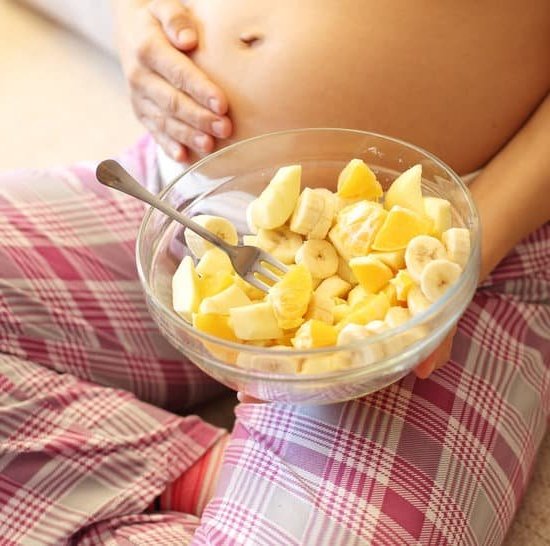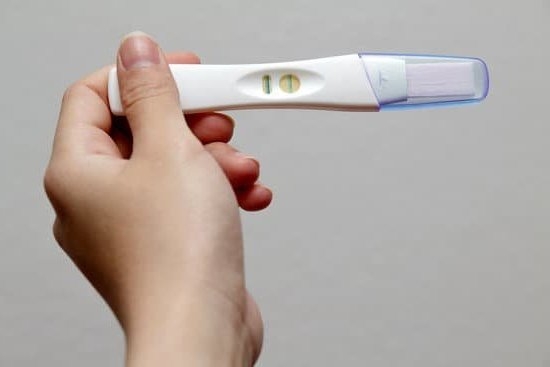When is the second trimester of pregnancy? The journey of pregnancy is divided into three trimesters, each showcasing unique physical and emotional changes. The second trimester, often considered the “honeymoon phase” of pregnancy, typically spans from week 13 to week 26. During this time, many women experience a welcome relief from early pregnancy symptoms while embracing the excitement of their growing baby.
As the middle phase of pregnancy, the second trimester brings a range of physical transformations for expectant mothers. From a noticeable baby bump to glowing skin and increased energy levels, this period is often described as the most comfortable and enjoyable stage of pregnancy. However, it’s essential to be aware of the various changes happening both internally and externally during this time.
Along with maternal changes, fetal development milestones are significant during the second trimester. This period marks crucial growth and development for the baby, with organs forming and becoming more defined. Expectant parents may even begin to feel their baby’s movements known as quickening, adding an extra layer of excitement and connection to the pregnancy journey. Understanding these milestones can help parents-to-be bond with their unborn child and track their progress throughout this trimester.
Definition of the Second Trimester and Its Duration
The second trimester of pregnancy typically spans from week 13 to week 28, making it a crucial period in the journey of expecting mothers. This trimester is often referred to as the “honeymoon phase” of pregnancy as many women experience relief from early pregnancy symptoms like nausea and fatigue. During this time, the body undergoes significant changes to accommodate the growing fetus, allowing for a smoother and more comfortable pregnancy experience for many.
To better understand the progression of pregnancy, here is a breakdown of the three trimesters:
- First Trimester (Week 1-12): This is when conception occurs, and major fetal developments take place.
- Second Trimester (Week 13-28): Considered by many as the most enjoyable phase, it is a time when physical discomfort lessens, and baby movements are felt.
- Third Trimester (Week 29-Birth): The final stretch where preparations are made for labor and delivery, and the baby’s organs continue to mature.
During the second trimester, expectant mothers may notice specific changes in their bodies as they adapt to their growing bump. Some common physical transformations include:
- Visible baby bump
- Growth of breasts
- Skin changes such as darkening of nipples or linea nigra
Understanding the timeline and developments that occur during each trimester can help prepare women both physically and emotionally for the journey ahead. Additionally, this knowledge allows healthcare providers to provide appropriate care and support throughout this critical stage of pregnancy.
Physical Changes During the Second Trimester
During the second trimester of pregnancy, your body undergoes a variety of physical changes as your baby continues to grow and develop. These changes are not only common but also essential as your body adapts to accommodate the developing fetus. Understanding these physical transformations can help you better navigate this stage of pregnancy with more ease and comfort.
Here are some common physical changes that women may experience during the second trimester:
- Weight Gain: Most women will start to gain weight during this trimester as the baby grows. It is important to monitor weight gain within healthy ranges recommended by your healthcare provider.
- Growing Belly: As your uterus expands to make room for the growing baby, your belly will continue to grow noticeably bigger. This may lead to changes in posture and an increase in lower back discomfort.
- Skin Changes: Many women notice changes in their skin during this trimester, such as darkening of the skin on the face (known as melasma), stretch marks on the belly, breasts, and thighs, and increased oiliness or dryness.
These physical changes are all part of the natural process of pregnancy and vary from woman to woman. Remember to consult with your healthcare provider about any concerns or unusual symptoms you may be experiencing. Staying informed and seeking appropriate prenatal care can help ensure a healthy and comfortable pregnancy experience.
Fetal Development Milestones in the Second Trimester
During the second trimester of pregnancy, a lot of exciting milestones occur in terms of fetal development. This period typically begins around week 13 and lasts until week 28, marking a crucial stage in your baby’s growth and development.
One significant milestone during this time is the rapid growth and maturation of your baby’s organs and tissues. By the end of the second trimester, your little one will have fully formed limbs, facial features, and even start practicing breathing movements.
Development of Senses
As the second trimester progresses, your baby’s senses begin to develop. Around week 18, they can start to hear sounds from outside the womb, such as your voice or music. By week 22, their taste buds are formed, allowing them to taste the amniotic fluid surrounding them. Additionally, their eyesight continues to improve as they practice blinking and even opening their eyes.
Movement and Activity
By the halfway point of the second trimester, usually around week 20, you may start feeling those first flutters and kicks known as “quickening.” These movements become more pronounced as your baby grows stronger. By weeks 24-28, you might even be able to see ripples on your belly from their movements. These active moments are not only reassuring but also a wonderful way to bond with your baby before they make their grand entrance into the world.
The second trimester is a crucial time for fetal development as your baby transitions from a tiny embryo to a fully-formed fetus. Keeping track of these milestones not only allows you to marvel at the wonder of life but also ensures that both you and your baby are progressing healthily throughout this transformative journey.
Common Symptoms and Comfort Measures for the Second Trimester
During the second trimester of pregnancy, which typically begins around week 13 and lasts until week 27, many women experience a welcome relief from some of the more challenging symptoms of the first trimester. However, this period also comes with its own set of physical changes and discomforts.
One common symptom during the second trimester is round ligament pain, which is caused by the stretching of ligaments that support the growing uterus. This sharp or cramp-like pain on one or both sides of the lower abdomen can be alleviated by changing positions slowly, practicing prenatal yoga, and using a pregnancy support belt.
Another common discomfort during this stage is heartburn, which can occur due to hormonal changes relaxing the valve between your esophagus and stomach. To manage heartburn during the second trimester, it is advisable to eat smaller meals more frequently throughout the day, avoid spicy or greasy foods, elevate your head while sleeping, and use over-the-counter antacids as recommended by your healthcare provider.
Additionally, backaches may become more pronounced as your belly grows larger and shifts your center of gravity. To alleviate backaches, try using proper body mechanics when lifting objects or bending down, consider using a supportive maternity pillow while sleeping, and engage in gentle exercises approved by your doctor to strengthen your core muscles.
Other common symptoms during the second trimester include increased vaginal discharge (which should be clear or white with no foul odor), nasal congestion (due to increased blood flow to mucous membranes), constipation (caused by hormonal changes slowing down digestion), and swollen feet and ankles (resulting from fluid retention).
Remember that every woman’s experience during pregnancy is unique – if you have concerns about any symptoms you are experiencing in the second trimester, do not hesitate to consult with your healthcare provider for personalized advice and guidance.
Nutritional Needs and Exercise Recommendations for the Second Trimester
Nutritional Needs During the Second Trimester
During the second trimester of pregnancy, it is essential to focus on meeting your increased nutritional needs to support both your own health and the development of your growing baby. It is recommended to consume a variety of nutrient-dense foods that provide essential vitamins and minerals such as folate, iron, calcium, and protein.
Including foods rich in these nutrients can help reduce the risk of birth defects, support healthy blood flow, strengthen bones, and aid in overall growth and development.
In addition to incorporating nutrient-rich foods into your diet, staying hydrated is crucial during this stage of pregnancy. Drinking an adequate amount of water can help prevent dehydration, regulate body temperature, support healthy digestion, and even reduce common pregnancy discomforts like constipation. It is generally recommended for pregnant individuals to consume about 10 cups (2.4 liters) of fluids each day.
Exercise Recommendations for a Healthy Pregnancy
Physical activity plays a vital role in promoting overall well-being during pregnancy, including the second trimester. Moderate exercise can provide numerous benefits such as improving circulation, reducing stress levels, boosting mood, and enhancing stamina for labor and delivery. It is important to consult with your healthcare provider before starting any new exercise routine while pregnant to ensure it is safe for you and your baby.
When engaging in physical activities during the second trimester, opt for low-impact exercises that are gentle on the joints but still offer cardiovascular benefits. Prenatal yoga, swimming, walking, and modified strength training can be great choices for maintaining fitness levels during this time.
Remember to listen to your body’s cues and avoid high-intensity workouts or activities with a high risk of falling or injury. Regular physical activity can contribute to a healthier pregnancy overall by supporting muscle tone, promoting better sleep quality, and even potentially reducing the risk of gestational diabetes.
Important Tests and Screenings During the Second Trimester
During the second trimester of pregnancy, there are several important tests and screenings that are typically conducted to monitor the health and development of both the mother and the baby. One of the most common tests performed during this time is the anatomy ultrasound, which is usually done around 18-22 weeks of pregnancy.
This ultrasound allows healthcare providers to check for any physical abnormalities in the baby’s organs and limbs, as well as determine the gender if desired. It is also a good opportunity to see how the baby is growing and developing.
In addition to the anatomy ultrasound, women may also be recommended to undergo additional screenings during the second trimester. These may include blood tests to check for gestational diabetes or anemia, as well as screenings for genetic disorders such as Down syndrome. Depending on a woman’s age, medical history, and other risk factors, healthcare providers may recommend specific tests to ensure a healthy pregnancy.
Regular prenatal check-ups are crucial during the second trimester to monitor blood pressure, weight gain, fetal growth, and overall well-being. These appointments also provide an opportunity for expectant mothers to ask questions, address any concerns they may have, and receive guidance on how to maintain their health throughout this stage of pregnancy.
By staying up-to-date with recommended tests and screenings during the second trimester, women can ensure that they are taking proactive steps towards a healthy pregnancy for both themselves and their baby.
Tips for Managing Emotions and Mental Well-Being in the Second Trimester
The second trimester of pregnancy, which typically starts around the 13th week and lasts until the 28th week, is often referred to as the “golden period” of pregnancy. During this time, many women experience a decrease in early pregnancy symptoms such as nausea and fatigue, leading to a newfound sense of energy and well-being. While physical changes are more evident in the first trimester, the emotional and mental challenges can become more pronounced in the second trimester.
One common emotional challenge that women may face during the second trimester is anxiety about the health and well-being of both themselves and their growing baby. This is a normal part of pregnancy as mothers-to-be become more aware of their changing bodies and the responsibility of caring for a developing life.
Seeking reassurance from healthcare providers, talking to other pregnant women, or joining support groups can help alleviate these anxieties and provide a sense of community during this special time.
Moreover, mood swings are also prevalent during the second trimester due to fluctuating hormone levels. One moment a pregnant woman may feel joyful and excited about her pregnancy, while in another moment she may feel overwhelmed or weepy without much reason.
It’s essential for women to practice self-care during this time by engaging in relaxation techniques like deep breathing exercises, meditation, prenatal yoga, or seeking therapy if needed. Taking care of one’s mental health is just as crucial as taking care of one’s physical health during pregnancy to ensure overall well-being for both mom and baby.
| Emotional Challenges | Self-Care Strategies |
|---|---|
| Anxiety about health and well-being | Seeking reassurance from healthcare providers or support groups |
| Mood swings due to fluctuating hormones | Engaging in relaxation techniques like meditation or prenatal yoga |
Conclusion
As expectant mothers progress through the journey of pregnancy, each trimester brings its unique set of challenges and milestones. The second trimester, typically considered one of the most enjoyable stages, is when many women experience a sense of relief from the initial symptoms of pregnancy while also witnessing significant developments in their growing baby. It spans from week 13 to week 27, marking a time of physical changes, fetal growth, and emotional adjustments.
During the second trimester, fetal development reaches exciting milestones as the baby’s organs continue to mature and develop. Expectant parents may even feel the first movements of their little one, known as quickening, adding a tangible connection to their pregnancy journey.
Alongside these developments, physical changes in the mother’s body become more pronounced as the bump grows and typical symptoms like morning sickness often subside. This period is also an ideal time for expecting mothers to focus on proper nutrition, exercise regularly within recommended guidelines, and stay up-to-date with essential tests and screenings.
Despite the numerous upsides during this stage of pregnancy, it’s important for women to prioritize their mental well-being as well. Managing emotions such as anxiety or mood swings can be crucial for a healthy pregnancy experience.
Finding support from loved ones, connecting with other expectant mothers, or seeking professional help if needed can all contribute to a smoother journey through the second trimester. Ultimately, embracing this phase with a positive mindset and proactive approach can lead to a fulfilling and joyful pregnancy experience for both mother and baby.
Frequently Asked Questions
Is Second Trimester at 13 or 14 Weeks?
The second trimester of pregnancy typically starts at the beginning of the 13th week and lasts until the end of the 27th week, which means it covers weeks 13 to 26 of gestation. This period is often characterized by reduced nausea and increased energy for most women.
What Are the 3 Trimesters of Pregnancy?
Pregnancy is divided into three trimesters: the first trimester lasts from conception until week 12, the second trimester spans weeks 13 to 26, and the third trimester extends from week 27 until birth. Each trimester brings different changes and challenges for both mother and baby.
What Are the Symptoms of 2nd Trimester Pregnancy?
The symptoms experienced during the second trimester of pregnancy can vary among women but commonly include relief from some first-trimester symptoms like morning sickness, increased energy levels, weight gain, a baby bump becoming more visible, skin changes such as a pregnancy glow or stretch marks, backaches due to an expanding uterus, and feeling fetal movement known as quickening.
Additionally, some may also experience round ligament pain, nasal congestion, and emotional changes during this phase of pregnancy.

Welcome to my fertility blog. This is a space where I will be sharing my experiences as I navigate through the world of fertility treatments, as well as provide information and resources about fertility and pregnancy.





